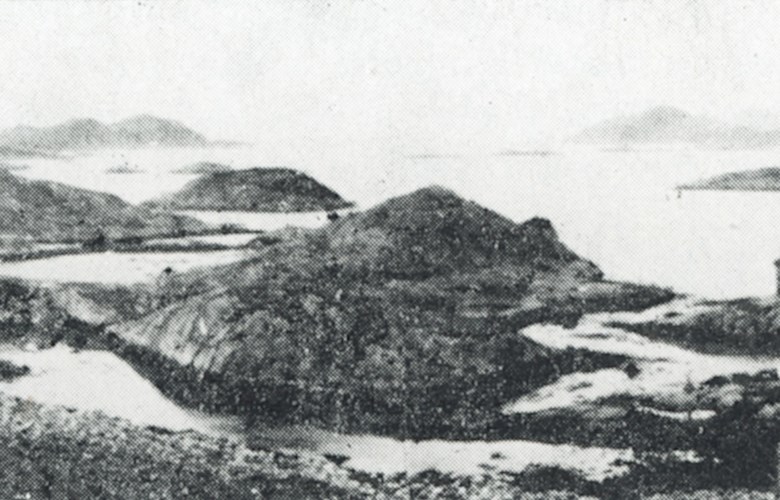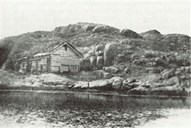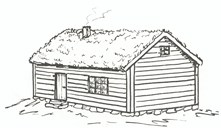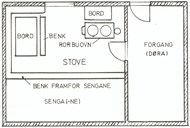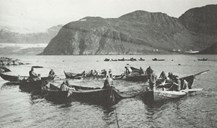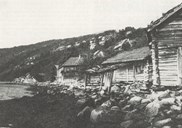The herring fisheries tempted people from far away
Herring has been much in demand, but not always a faithful friend to the coastal people of Norway. Periodically the drifts of herring have occurred on an annual basis and led to good incomes for many local communities. In 1808, the herring shoals returned in large numbers after some years with bad catches. The first drifts came to Hordaland, but moved quickly north to Kinn and Bremanger. This was the beginning of a herring adventure that would last well into the 1870s.
From all over western Norway
The herring fisheries benefited far more people than those who lived near the fishing grounds along the coast. People came rowing and sailing, and gradually being towed after steamers from many coastal areas. The coastal areas from Rogaland in the south and up to Møre in the north were well represented, but from the innermost villages of the fjords and even from inland communities like Voss, people were tempted to go to the coast with the prospect of good profits and adventure.
About 30 fisherman shacks
During the rich fisheries at Kinn and Bremanger, many people found lodgings at Kalvåg or in special lodging boats anchored up in the harbour there or elsewhere on the island of Frøya. However, long before the herring adventure started, people had been able to get a roof above their heads. Some people from the Nordfjord region had already built fisherman shacks southwest of Kalvåg, close to Storehovden or on the islet of Geitholmen. There were supposedly about 30 of these shacks there in the mid-1860s. We know the names of seven shacks that were built by people from the Innvik area. Exactly when this area became of interest to the Nordfjord people we do not know, but we do know that some of these were leased as early as the latter half of the 18th century. These shacks were not the first ones, though. Old sites and other remnants may indicate that there was activity there long before that time, maybe as far back as the 6th century. Who these people were, however, we do not know.
Life on the islet of Geitholmen
Geitholmen was a good choice for the people from Nordfjord and others who used the place. From Storhovden, also called Torshovden, the fishermen had a good view of the fishing grounds and could observe whales or seabirds that would indicate any approaching drifts of herring. The fishery itself took place in the area from south of Liset to north of Havrøy. Occasionally they were lucky enough that the shoals of herring came close to land at Geitholmen or in the bay of Steinsetvågen. Even if herring was the most important fish, the area around Frøya was a good fishing ground for other species as well. Cod and coalfish follow the herring, and these fish were salted and sold, but some was taken care of as a welcome food supplement in their own households.
There was not much time for idling for the fishermen at Geitholmen. After finishing a long day on the fishing grounds, they still had a solid evening's work that had to be done. The fish had to be gutted and salted, and seines and other fishing gear had to be made ready for the following day. This work had to be done very carefully, as it could be problematic if they were delayed by tangled seines.
The fisherman shacks
By modern standards, the housing conditions were rather primitive. One of the fisherman's shacks has been drawn based on memory, showing a house that was 7.5 metres long and 5 metres wide, and with walls of solid timber. When the woodstove was taken into use, it was common to build a loft above the main room, which could not be done in a so-called "smoke cottage". In addition, there was a bedroom and an entrance porch. The bedroom measured 10 square metres, without any window and with one common bed. They did not have much space in the shack, then, but they still found space to rent to other fishermen. Most often it was the loft that was rented out.
Cramped quarters, but a sociable life
With twelve men and perhaps tenants the shack could become very crowded. The main room functioned as a living room, kitchen and a place for drying clothes. One can easily imagine that that the air was rather heavy and damp at times. This was the case when it had rained relentlessly for days on end, and attempts were made to dry their clothes. If the weather was too bad, this meant that they would be weather-bound. The extra time was normally spent doing repair work on boat and gear. Otherwise, they could also use the occasion to find some beer and spirits and pay a visit to other fishermen. The entertainment was taken care of by themselves, and many a good yarn was spun in various versions in the shacks, and some played tunes on the Jew's harp. There could be rows and fighting from time to time, but this was not considered a big problem.
Common property
The fisherman shacks were mostly common property for people from the same farm or the same hamlet, and the shacks all had names from Innvik or Utvik such as Utvikstova, Heggedalstova, Ulvedalstova, Bergsetstova, Tistamstova and Sølvbergstova. The only water source was located above the Randastova and was called the Randabekken.
The end of a long epoch
After the herring practically disappeared from Bremanger in the years between 1868 and 1875, most of the non-local fishermen also disappeared. The fisherman shacks at Liset were left empty after a while. However, a rich cod fishery could occasionally mean that some of the shacks were still in use long after the herring disappeared. In the mid-1920s, the last fishermen from Nordfjord returned home. At that time, most of the shacks had been torn down or simply collapsed. The building material was used for other buildings, whereas some of the foundation walls were used to improve the quay at Kalvåg.
The Nordfjord fishermen return home
After the last fisherman shack was torn down just after the Second World War, none of the original shacks remain. However, in 1998, a new fisherman's shack called Utvikstova was built. It was built on the initiative from people of Utvik who wanted to renew the old ties to Geitholmen. In order to finance the building, the co-operative company "Geitholmslaget" was established.

